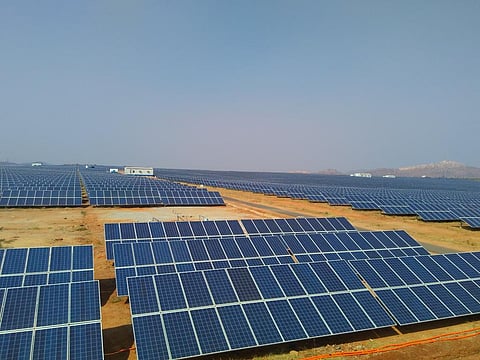Distributed renewable energy : How to make it work for India
In April 2019, the government of India pledged to electrify all villages connected to the central electricity grid through its ambitious Saubhagya scheme.
While this development is by no means a trivial feat, the quality and reliability of the electricity supply are still questionable, and a grid connection to a village does not necessarily mean power to every household or business.
The renewable energy (RE) sector in India is driven by a mix of national targets and support schemes at various legislative levels. India’s solar energy initiatives fall under the larger purview of National Action Plan on Climate Change (NAPCC).
At present, the government’s primary focus is to meet the RE target of 175 gigawatt by 2022 and 450 GW by 2030 has largely been on utility-scale solar.
However, achieving India’s ambitious RE targets will also need capacity addition in distributed renewable energy (DRE) projects, which can significantly boost employment.
If a more favourable regulatory and policy environment is created, such DRE projects, though smaller in size, are potentially more scalabile and have substantive co-benefits.
Recently Climate Policy Initiative has published The Future of Distributed Renewable Energy in India. This report outlines the benefits and market potential of India’s DRE sector examines the current policy and institutional landscape, and provides recommendations for the different stakeholders.
To meet its sustainable energy targets, India will require an annual DRE investment of $18 billion (Rs 1.3 lakh crore) by 2024 — ten times the current levels — according to the report.
DRE plays a significant market volume and to achieve the ambitious rooftop target of 40 GW an estimated investment of $25-30 billion is required. Similarly, the estimated annual market size of Solar Agriculture Pumps and Solar Cold Storage is expected to reach $1.5 billion and $3.3 billion respectively.
The Government of India’s Phase II grid-connected rooftop solar (RTS) scheme programme provides a central role to power distribution companies (DISCOM) for disbursement of the central subsidy.
But it only covers the residential segment. The commercial and industrial segment, on the other hand, consumes 51 per cent of power in India, adding a large share to the DISCOM’s income.
A holistic demand aggregation exercise will allow DISCOMs to get both a transaction fee for facilitating the installation as well as a monthly fee for operation and maintenance (O&M) and billing / collection.
The Centre’s KUSUM scheme currently has a centralised tendering process, allowing state DISCOMs to partner with private installers at a local level. Convincing farmers, however, to give up subsidised grid electricity and pay for high capital investment solar pump can be tough.
To alleviate this, the government could think in terms of an operational model where DISCOMs can facilitate commercial partnerships with solar pump installers and local farmer co-operatives. A surplus power-pooling arrangement at a single point of injection with a guaranteed payment mechanism will further secure the interest of farmers.
The Centre currently offers a 30 per cent subsidy on solar cold storage installation under its broader rural livelihood subsidy scheme. However, considering the importance of cold storage in the agriculture supply chain, it is vital to create a separate solar cold storage programme.
India is a major food producer but more than 30 per cent of the produce is wasted. A lack of reliable electricity in villages is the primary reason for this wastage.
Given high capital requirements ($2,500-5,500 per unit) and the fact that there are only a handful of solar cold storage manufacturers in India, a targeted policy will help in scaling up demand and reducing costs.
In addition to the subsidies, tax breaks can be used to use reserves of cash-rich high net worth farmers (HNI). Providing additional tax benefits through accelerated depreciation can enable them to investment into solar cold storage installations.


.jpeg)